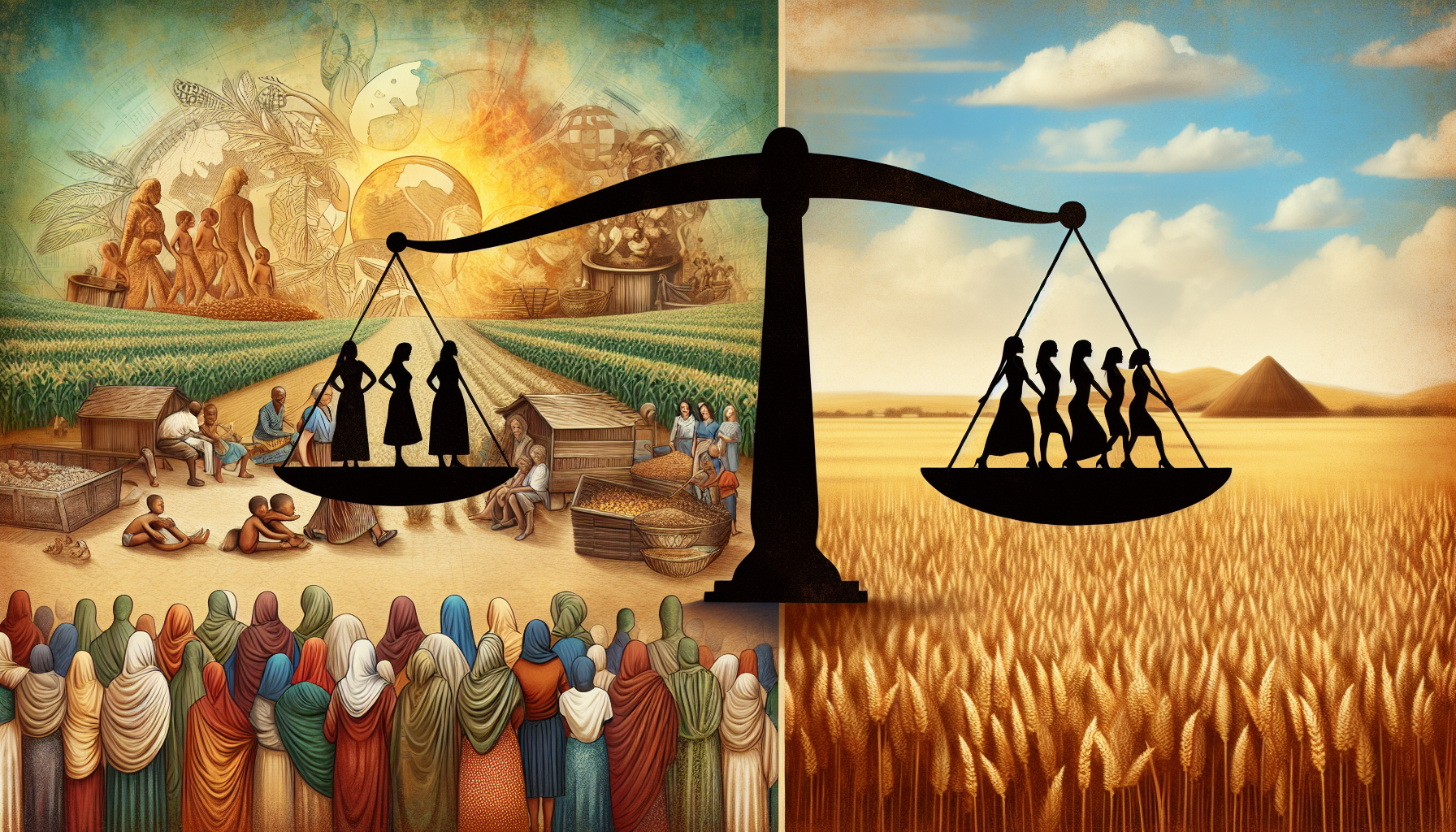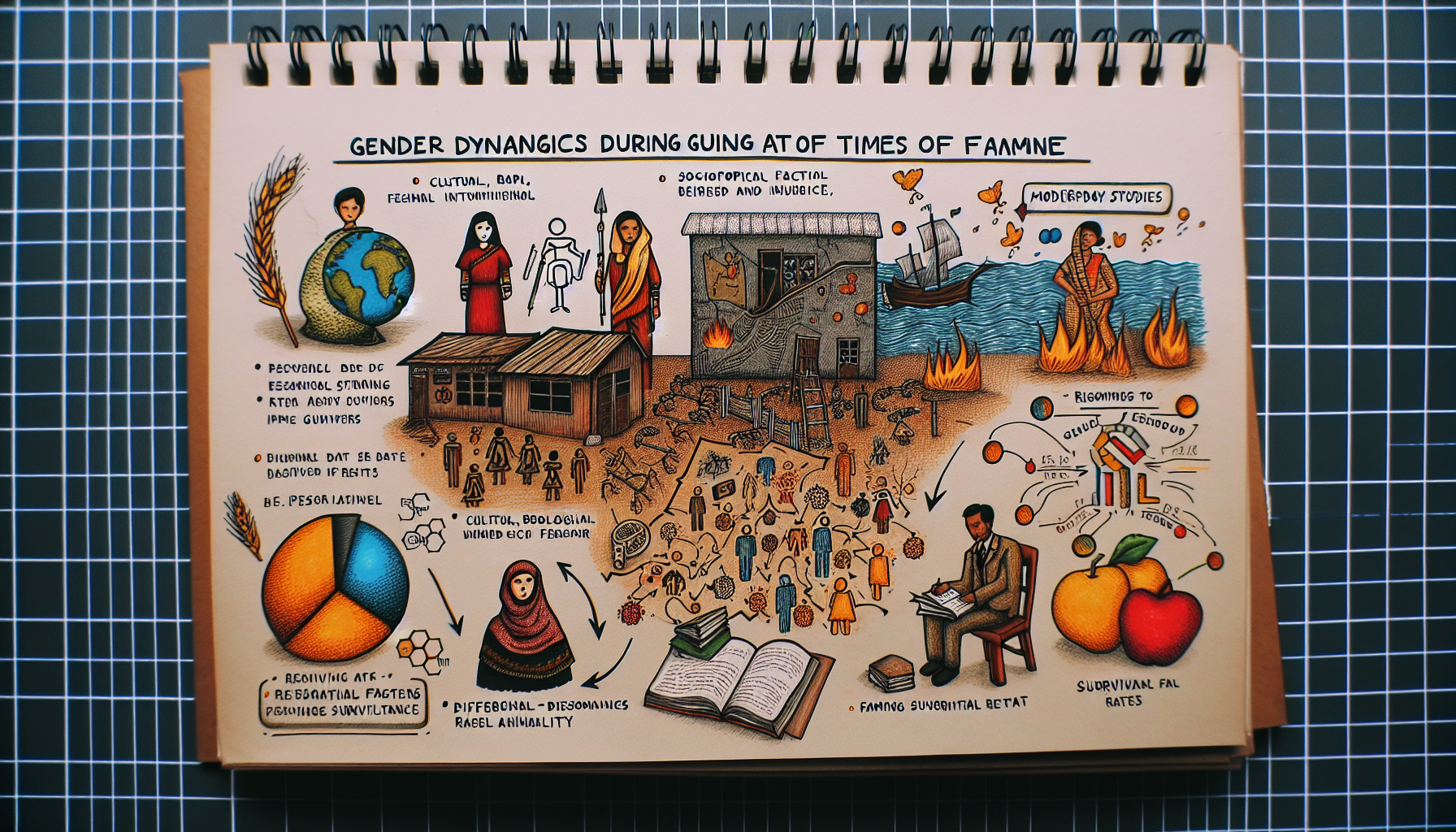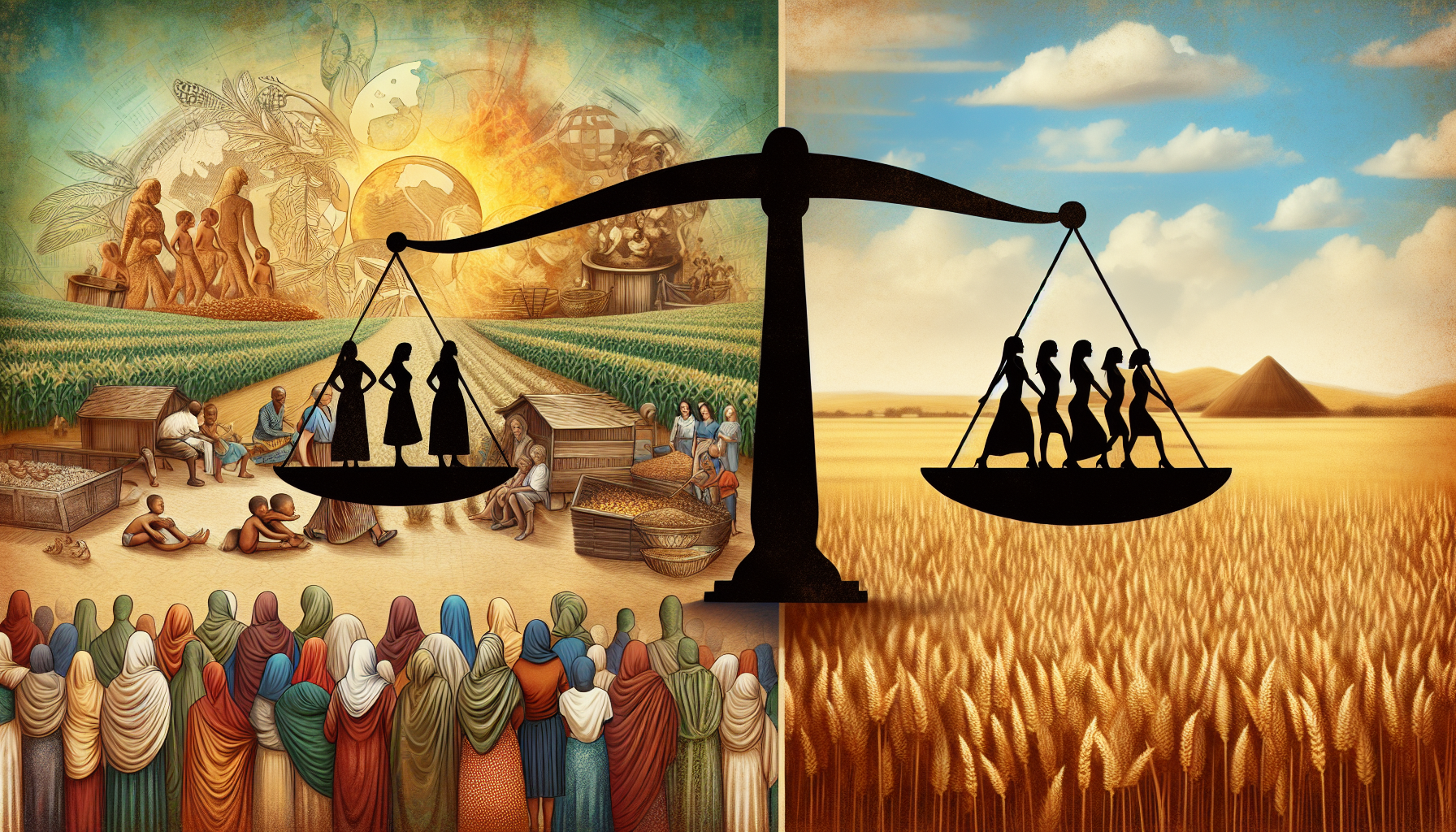In the face of hardship and scarcity, one wonders who has the upper hand in survival. This thought emerges as we ponder the question: Are women more likely to survive famine? Curiosity around this topic stems from various factors, such as historical narratives, biological factors, and societal norms. Delving into the intricacies of this phenomenon, we unravel a fascinating perspective on the resilience and adaptability of women during periods of extreme adversity. As we embark on this exploration, prepare to uncover surprising insights that challenge our preconceived notions and shed light on the untold stories of survival.

Biological Differences
Biological differences between men and women can have a significant impact on survival during times of famine. One notable difference is in hormonal levels. Women tend to have higher levels of estrogen, which can provide some degree of protection against certain health issues. Estrogen has been shown to have antioxidant properties and can help regulate the immune system. These factors may contribute to women’s ability to withstand the physiological stressors associated with famine.
Another biological difference is that women generally have higher levels of body fat compared to men. While this may seem like a disadvantage in times of scarcity, it can actually serve as an advantage during periods of food scarcity. The extra fat reserves can provide a source of energy when food resources are scarce, allowing women to sustain themselves for longer periods of time.
Additionally, women typically have lower caloric requirements compared to men. This means that they can survive on fewer calories for extended periods. During a famine, when food availability is severely limited, women’s lower caloric needs may enable them to stretch their limited resources further, increasing their chances of survival.
Sociocultural Factors
Beyond biological differences, sociocultural factors also play a role in women’s survival during famines. Gender roles and norms can impact access to resources. In many societies, women are responsible for gathering food and caring for the family. These roles may give women more knowledge and skills in finding alternate food sources and navigating difficult conditions, contributing to their survival.
Access to resources is another critical factor. In some situations, women may have limited access to education, employment, and economic resources, making them more vulnerable during times of crisis. However, in societies where women are empowered and have equal access to resources, their chances of survival during a famine may be higher.
Furthermore, societies often prioritize the well-being of women and children during times of crises. This focus on protecting women and children can result in increased support and resources being allocated to them, enhancing their chances of survival.
Maternal Role
The maternal role that women often assume during famines also contributes to their survival. Women are often seen as the primary caretakers of children and families, and this role extends to times of scarcity. They take on the responsibility of protecting and nurturing their children, often putting their own needs aside in the process.
Breastfeeding is also a crucial aspect of the maternal role. Breast milk provides vital nutrients and immune factors that can help infants survive during times of food scarcity. Women who can breastfeed their children have a greater chance of ensuring their survival and overall well-being.
Moreover, women’s capacity for self-sacrifice during famines cannot be overlooked. They may willingly give up their portion of food to ensure the survival of their children or other family members. This selflessness and willingness to endure hardships for the sake of their loved ones contributes to women’s resilience during times of famine.
Survival Strategies
During famines, women often rely on social support networks for survival. Women are known to have strong social connections and are often part of close-knit communities. These networks provide emotional support, information sharing, and resource pooling, all of which can enhance their chances of survival.
Women also employ adaptive coping mechanisms to navigate through challenging circumstances. They may engage in resourceful strategies such as foraging, sharing responsibilities, and utilizing traditional skills and knowledge. These adaptive coping mechanisms enable women to make the most of limited resources and increase their chances of survival.
Collaborative efforts among women in times of famine are also crucial. Women may come together to form communal kitchens or sharing systems, where they combine efforts to maximize food availability and share the burden of food preparation. This sense of solidarity and collective action contributes to the resilience of women during famines.

Resilience
Women demonstrate both physical and psychological resilience during times of famine. Physically, their bodies are better equipped to withstand hardships due to hormonal and biological differences mentioned earlier. Women’s ability to endure nutritional deficiencies, prolonged physical exertion, and harsh environmental conditions allows them to persevere and survive in challenging circumstances.
Psychologically, women often exhibit resilience in the face of adversity. They may draw strength from their sense of purpose as mothers and caretakers, motivating them to persevere and find ways to ensure the survival of their family. Their mental resilience and determination contribute significantly to their ability to endure and overcome the hardships of famine.
Healthcare Prioritization
In times of famine, healthcare priorities often shift, with a focus on preventative measures and the treatment of vulnerable individuals. Women, particularly pregnant women and mothers, are often given priority for healthcare services. This prioritization ensures that they receive necessary antenatal and postnatal care, reducing the risks associated with pregnancy and childbirth during famine conditions.
Additionally, women tend to have higher survival rates during famines, primarily due to the prioritized access to healthcare services. By receiving timely medical interventions and treatments, women can better cope with the health challenges that arise during times of scarcity, thereby increasing their chances of survival.
Reproductive Significance
Women’s survival during famines is crucial for the survival of the human species as a whole. As the primary bearers of children, women play a vital role in ensuring the continuity of generations. Their ability to survive and reproduce during periods of scarcity contributes to genetic diversity and the resilience of future generations.
Furthermore, women’s investment in future generations is a driving force for their survival during famines. The desire to protect and provide for their children motivates women to find ways to sustain themselves, even in the harshest of conditions. Women’s reproductive significance, coupled with their maternal instincts, strengthens their resilience and determination to survive.
Gender-Based Violence
Unfortunately, women also face increased vulnerabilities to gender-based violence during famines. Desperate circumstances, disrupted social structures, and unequal power dynamics can make women more susceptible to exploitation and abuse. Sexual exploitation, including rape and coerced transactions for food or resources, becomes a distressing reality for many women.
Survivorship challenges also arise for women who have experienced gender-based violence during famine. The psychological and physical trauma inflicted on these women can have long-lasting effects, affecting their ability to cope and recover. Addressing gender-based violence and providing support for survivors is crucial to ensuring the safety and well-being of women during times of crisis.
Displacement and Migration
Famines often force people to flee their homes in search of food and survival. Women, like men, may experience displacement during such times. However, they may face fewer mobility restrictions compared to men, particularly in societies where cultural norms allow women to move about more freely. This relatively greater mobility can offer women more opportunities to find food and access resources, potentially enhancing their chances of survival.
Decisions on fleeing during famine are often influenced by gender roles and responsibilities. Women may prioritize the safety and well-being of their children and elderly relatives, making calculated decisions based on the available options. These decisions may impact women’s survival, as they often shoulder the responsibility of maintaining their family’s well-being during displacement.
Coping with changes and adjusting to new environments also presents challenges for women during times of displacement. Adapting to unfamiliar territories, accessing necessary resources, and maintaining social support networks are essential factors for ensuring the survival of women and their families.
Data and Research Gaps
Despite the importance of understanding the differential impacts of famines on women, there are significant gaps in gender-specific data and research. Often, data collection neglects to capture gender-specific information, leading to incomplete knowledge about women’s experiences during famines. This lack of data makes it difficult to fully comprehend the unique challenges faced by women and affects the effectiveness of interventions and policy-making processes.
Additionally, women are often underrepresented in research studies focusing on famine-related issues. This underrepresentation limits our understanding of the gendered impacts and nuances of famines. It is crucial for researchers and policymakers to prioritize gender equality in data collection and research efforts to ensure that women’s experiences and needs are adequately addressed.
Further studies are needed to explore the intricate relationship between gender and survival during famines. These studies can provide valuable insights into the factors that contribute to women’s resilience, identify effective interventions, and inform policies to better support women during times of crisis.
In conclusion, women’s survival during famines is influenced by a combination of biological differences, sociocultural factors, maternal roles, survival strategies, resilience, healthcare prioritization, reproductive significance, vulnerabilities to gender-based violence, displacement and migration experiences, and the need for more comprehensive data and research. Recognizing and addressing the unique challenges faced by women during famines are vital for fostering gender equality, ensuring the well-being of women and their communities, and improving overall responses to food crises.
